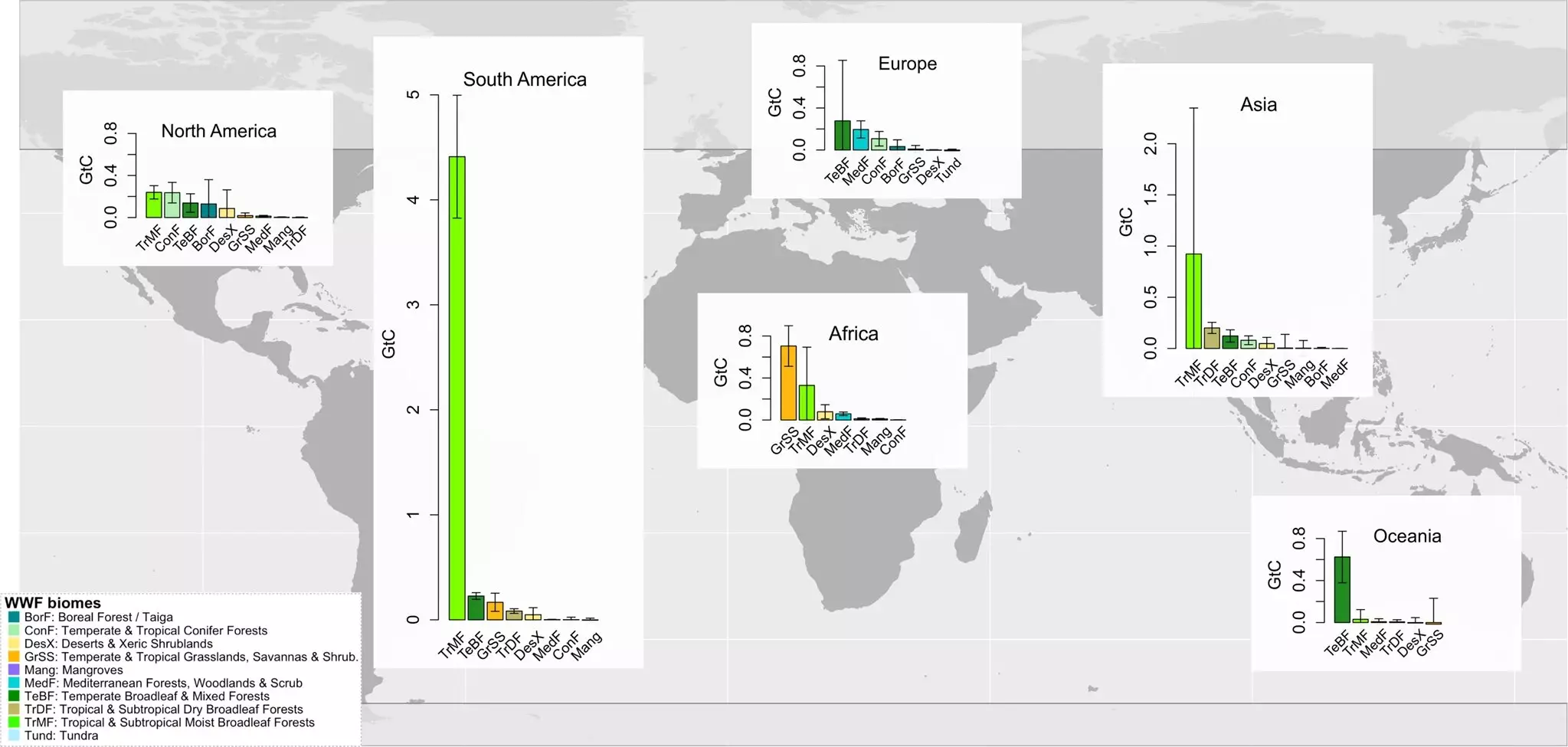A recent study conducted by the University of Maryland (UMD), Northern Arizona University, the University of Arizona, Conservation International, and more has uncovered that protected forests across the globe store an additional 9.65 billion metric tons of carbon in their aboveground biomass in comparison to similar unprotected areas. The study highlights the significance of protected areas in our continued climate mitigation efforts. The researchers used NASA’s Global Ecosystem Dynamics Investigation (GEDI) data to compare the efficacy of protected and unprotected areas in avoiding emissions to the atmosphere. The study aims to emphasize the importance of protecting forests to preserve carbon and mitigate climate change.
The Study’s Key Findings
The study demonstrated that protected areas provide disproportionately more ecosystem services, including carbon storage and sequestration, than non-protected areas. The team of researchers utilized highly accurate forest height, structure, and surface elevation data provided by NASA’s GEDI to analyze the data and determine the magnitude of avoided emissions in protected areas. The researchers found that protected, moist broadleaf forest biomes in the Brazilian Amazon have the most significant, most climate-positive impact, with Brazil contributing 36% to the global signal.
The study quantifies that the amount of aboveground biomass gained from protected areas is roughly equivalent to one year of annual global emissions from fossil fuels. Previous attempts to quantify protected areas’ biomass content had high uncertainties and/or biases. However, GEDI data helped the researchers overcome these limitations. The team specifically used height, cover, Plant Area Index (PAI), and Above Ground Biomass Density (AGBD) products from the first 18 months of GEDI mission data, which was collected between April 2019 and September 2020. In total, the researchers analyzed more than 400 million 3D structure samples and matched each protected area to ecologically similar unprotected areas based on climate, human pressure, land type, country, and other factors.
The Urgency of Protection and Restoration
The researchers’ study highlights the urgency of protection and restoration for biodiversity conservation and climate change mitigation, as emphasized by the latest report by the Intergovernmental Panel on Climate Change (IPCC). The IPCC found that nature-based solutions such as reducing the destruction of forests and other ecosystems, restoring them, and improving the management of working lands, such as farms, are among the top five most effective strategies for mitigating carbon emissions by 2030.
The study emphasizes the importance of protected areas in the conservation toolkit. Protected areas are an essential part of preserving living carbon, which is essential to mitigate climate change’s worst effects. This research reflects the importance of the Convention on Biological Diversity target of achieving 30% protection of all ecosystems as an effective strategy to address biodiversity loss and climate change. The study concludes that protected areas provide more ecosystem services, including carbon storage and sequestration, than non-protected areas, highlighting the significance of preserving forests to mitigate climate change.
The lead author of the study, UMD Assistant Professor Laura Duncanson, believes that the study’s findings are novel and provide the first evidence that protected areas are effectively sequestering a lot more CO2 from the atmosphere than similar but degraded areas that surround them. The study shows how important protected areas are in preserving carbon and mitigating climate change, and the researchers hope to continue their work to monitor the future success of protected areas for preserving carbon.
The study provides evidence of the importance of protected areas in climate mitigation efforts. It shows that protecting forests and other ecosystems is one of the most effective strategies to preserve carbon and mitigate climate change. The study highlights the urgency of protecting and restoring biodiversity and working lands, such as farms, to mitigate carbon emissions. The research provides policymakers with valuable insights into the significance of protected areas and their role in preserving carbon and mitigating climate change.


Leave a Reply